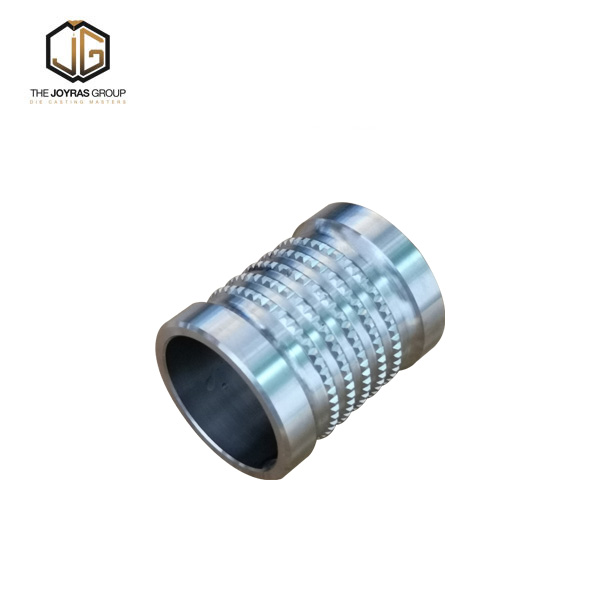Key Features of Aluminum CNC Machined Parts
2024-06-21
Aluminum CNC machined parts are components manufactured using computer numerical control (CNC) machinery from aluminum, a versatile and widely used material in various industries. These parts are known for their precision, durability, and excellent mechanical properties. Here's a detailed overview:
Key Features of Aluminum CNC Machined Parts:
1. Material Properties:
- Lightweight: Aluminum has a high strength-to-weight ratio, making it ideal for applications where weight reduction is critical.
- Corrosion Resistance: Naturally forms a protective oxide layer, making it resistant to corrosion.
- Thermal Conductivity: Excellent thermal conductivity, beneficial for heat dissipation applications.
- Recyclability: Highly recyclable, making it an environmentally friendly choice.
2. Precision Manufacturing:
- CNC machining allows for high precision and tight tolerances, ensuring consistent and accurate parts.
- Capable of producing complex geometries and intricate designs.
3. Surface Finish Options:
- Various surface finishes can be applied, including anodizing, powder coating, polishing, and brushing, to enhance appearance and performance.
4. Customization:
- CNC machining offers flexibility in design, allowing for customization to meet specific requirements and applications.
Applications:
1. Aerospace:
- Components such as brackets, housings, and structural parts due to aluminum’s lightweight and strength.
2. Automotive:
- Engine parts, chassis components, and performance upgrades benefit from aluminum’s properties.
3. Electronics:
- Heat sinks, enclosures, and mounting brackets take advantage of aluminum’s thermal conductivity and machinability.
4. Medical:
- Surgical instruments, equipment housings, and prosthetics require the biocompatibility and precision of aluminum parts.
5. Industrial Machinery:
- Various machine parts, fixtures, and tooling components benefit from the strength and durability of CNC machined aluminum.
6. Consumer Products:
- High-quality consumer goods such as phone cases, sports equipment, and kitchen utensils utilize the aesthetic and functional properties of aluminum.
Manufacturing Process:
1. Design and CAD Modeling:
- Parts are designed using CAD software, creating detailed 3D models.
- CAD models are converted into CNC-compatible formats.
2. Material Selection:
- The appropriate grade of aluminum (e.g., 6061, 7075) is selected based on the application requirements.
3. CNC Programming:
- CAM (Computer-Aided Manufacturing) software generates the toolpaths and machine instructions.
- The CNC machine is programmed to follow these instructions precisely.
4. Machining:
- CNC milling, turning, drilling, and other operations are performed to shape the aluminum into the desired part.
- Multiple axes of movement (typically 3 to 5) allow for complex geometries.
5. Finishing:
- Post-machining processes like deburring, polishing, and coating enhance the part’s appearance and performance.
- Surface treatments such as anodizing add corrosion resistance and color options.
6. Quality Control:
- Rigorous inspection processes ensure parts meet specifications and tolerances.
- Techniques include coordinate measuring machines (CMM), optical inspection, and functional testing.
Advantages:
1. High Precision and Accuracy:
- CNC machining achieves tight tolerances and repeatability, ensuring high-quality parts.
2. Efficiency:
- Automated machining processes reduce production time and increase efficiency.
3. Flexibility:
- Quick setup changes and programming adjustments accommodate various designs and production volumes.
4. Consistency:
- CNC machining provides consistent quality across large production runs.
5. Complex Geometry:
- Capable of producing intricate and complex shapes that might be challenging with other manufacturing methods.
Challenges:
1. Cost:
- Initial setup and programming can be costly, especially for low-volume production.
2. Material Waste:
- Machining processes may produce material waste, though it can be mitigated with efficient planning and recycling.
Choosing the Right Manufacturer:
1. Experience and Expertise:
- Look for manufacturers with experience in producing aluminum CNC machined parts for your industry.
2. Capabilities:
- Ensure the manufacturer has advanced CNC machinery and technology.
3. Quality Assurance:
- Check for certifications such as ISO 9001 to ensure quality management systems are in place.
4. Customer Reviews:
- Read reviews and testimonials to gauge customer satisfaction and reliability.
5. Lead Time:
- Consider the manufacturer’s production lead times and their ability to meet your deadlines.
Aluminum CNC machined parts are essential components across various industries due to their precision, durability, and excellent material properties. Choosing the right manufacturer and maintaining quality control throughout the production process ensures the best results for your applications.



